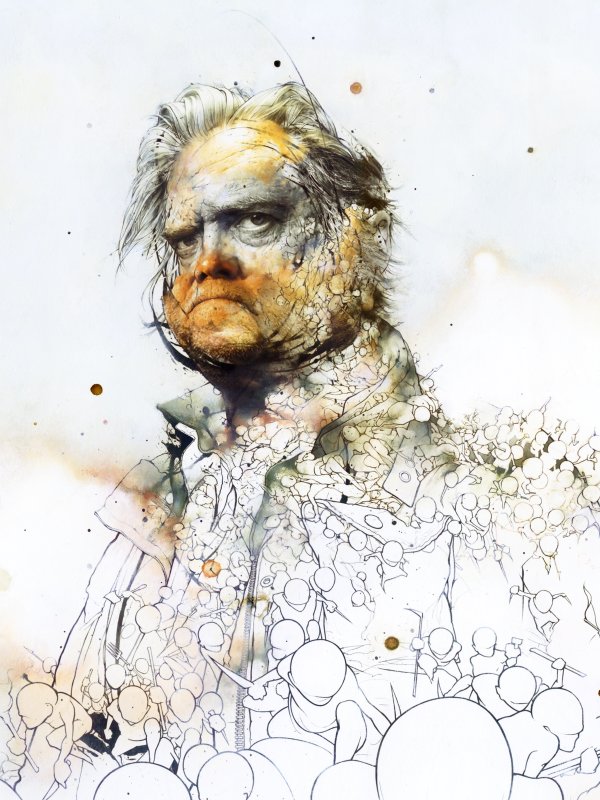Illustration by Andrew Zbihlyj
THE NEW REPUBLIC: In February’s Senate trial to impeach and convict Donald Trump for the crime of inciting an insurrection at the U.S. Capitol on January 6, the modern GOP had one last shot at rescuing its long-battered image as a responsible governing party. It might have reclaimed something of its former standing as an honest broker in the American two-party system, committed (among other things) to the peaceful transition of power, the conduct of free and fair elections, and each federal lawmaker’s oath to uphold the Constitution. Instead, it chose, yet again, the path of dereliction and impunity, determined to lash itself to the authoritarian leadership of Donald Trump and the white nationalist mob that brought bloodshed and threats of assassination to the halls of Congress in an effort to overturn by force President Joe Biden’s 2020 election win.
How could a venerable national party arrive at such a disastrous moment of reckoning, and placidly enable the forces of destruction within its own ranks? To get at anything like a strategic account of this process, it’s helpful to revisit the pet historical thesis of Steve Bannon, perhaps the most pivotal intellectual figure in laying out the ideology of Trumpism—and, as we shall see, a lead party propagandist in the run-up to the January 6 insurrection. Exploiting the moral abjection of the GOP leadership, Bannon has primed his far-flung audience of white nationalists and government-bashing militants for revolt, and is pleased to descry in the resulting mayhem the Fourth Turning of the Republican Party—which he is apparently hoping will spark in turn the Fourth Turning of the United States of America, if not the world.
Allow me to explain. The Fourth Turning is the historical “season” in which we presently find ourselves, according to Neil Howe and the late William Strauss, authors of the enthusiastically Bannon-endorsed 1997 book of the same name. Fourth Turnings, we’re told, are not very nice, but they are necessary in order to clear the ground for the coming High season of transformation (a cyclical First Turning) that will precede a fuller moment of social Awakening (a Second Turning).
The authors have constructed a circle-in-a-spiral kind of pop-sociological system of history. Like many futurist tracts, it’s adopted an exceedingly long and vague time horizon for the kinds of change it prophesies, conveniently engineered to make it appear as though the crisis point of the last 80 to 100 years is poised to happen right about now. If there’s a time to rend and a time to sow, now, they tell us, is the time for rending.
Bannon has never built much of anything. He is far better at tearing things down, busting stuff up—so much so that he’s devoted his late career to the proposition. Other than his famous “platform for the alt-right” at Breitbart News, Bannon has never built much of anything. His past tours as an investment banker at Goldman Sachs and producer in the entertainment industry were classic nonproductive adventures in the kind of rent-seeking capitalism that he nowadays professes to deplore. Bannon is far better at tearing things down, busting stuff up—so much so, in fact, that he’s devoted his late career to the proposition. It’s not hard to see why The Fourth Turning’s apocalyptic, quasi-mystical vision would appeal to the likes of Bannon; it offers the perfect rationalization for sociopathic behavior. He’s not breaking stuff for the thrill of it—he’s executing history’s larger plan for all of us, playing his part. And so it was that Bannon placed himself at the center of the organizing effort that culminated in the storming of the U.S. Capitol building on January 6. MORE

